George Yammine
Hardware Limitations and Optimization Approach in 1-Bit RIS Design at 28 GHz
Jun 10, 2025Abstract:Reconfigurable intelligent surfaces (RIS) have emerged as a transformative technology for electromagnetic (EM) wave manipulation, offering unprecedented control over wave reflections compared to traditional metallic reflectors. By utilizing an array of tunable elements, RIS can steer and shape electromagnetic waves to enhance signal quality in wireless communication and radar systems. However, practical implementations face significant challenges due to hardware limitations and phase quantization errors. In this work, a 1-bit RIS prototype operating at 28 GHz is developed to experimentally evaluate the impact of hardware constraints on RIS performance. Unlike conventional studies that model RIS as an ideal phase-shift matrix, this study accounts for physical parameters that influence the actual reflection pattern. In particular, the presence of specular reflection due to hardware limitations is investigated. Additionally, the effects of phase quantization errors, which stem from the discrete nature of RIS elements, are analyzed, and a genetic algorithm (GA)-based optimization is introduced to mitigate these errors. The proposed optimization strategy effectively reduces gain degradation at the desired angle caused by 1-bit quantization, enhancing the overall performance of RIS. The effectiveness of the approach is validated through measurements, underscoring the importance of advanced phase control techniques in improving the functionality of RIS.
Benchmarking Quantum Reinforcement Learning
Jan 27, 2025Abstract:Benchmarking and establishing proper statistical validation metrics for reinforcement learning (RL) remain ongoing challenges, where no consensus has been established yet. The emergence of quantum computing and its potential applications in quantum reinforcement learning (QRL) further complicate benchmarking efforts. To enable valid performance comparisons and to streamline current research in this area, we propose a novel benchmarking methodology, which is based on a statistical estimator for sample complexity and a definition of statistical outperformance. Furthermore, considering QRL, our methodology casts doubt on some previous claims regarding its superiority. We conducted experiments on a novel benchmarking environment with flexible levels of complexity. While we still identify possible advantages, our findings are more nuanced overall. We discuss the potential limitations of these results and explore their implications for empirical research on quantum advantage in QRL.
Velocity-Based Channel Charting with Spatial Distribution Map Matching
Nov 14, 2023Abstract:Fingerprint-based localization improves the positioning performance in challenging, non-line-of-sight (NLoS) dominated indoor environments. However, fingerprinting models require an expensive life-cycle management including recording and labeling of radio signals for the initial training and regularly at environmental changes. Alternatively, channel-charting avoids this labeling effort as it implicitly associates relative coordinates to the recorded radio signals. Then, with reference real-world coordinates (positions) we can use such charts for positioning tasks. However, current channel-charting approaches lag behind fingerprinting in their positioning accuracy and still require reference samples for localization, regular data recording and labeling to keep the models up to date. Hence, we propose a novel framework that does not require reference positions. We only require information from velocity information, e.g., from pedestrian dead reckoning or odometry to model the channel charts, and topological map information, e.g., a building floor plan, to transform the channel charts into real coordinates. We evaluate our approach on two different real-world datasets using 5G and distributed single-input/multiple-output system (SIMO) radio systems. Our experiments show that even with noisy velocity estimates and coarse map information, we achieve similar position accuracies
Indoor Localization with Robust Global Channel Charting: A Time-Distance-Based Approach
Oct 07, 2022
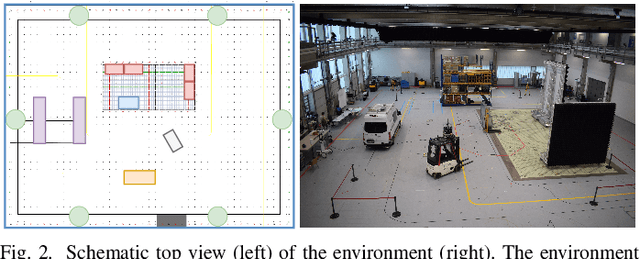


Abstract:Fingerprinting-based positioning significantly improves the indoor localization performance in non-line-of-sight-dominated areas. However, its deployment and maintenance is cost-intensive as it needs ground-truth reference systems for both the initial training and the adaption to environmental changes. In contrast, channel charting (CC) works without explicit reference information and only requires the spatial correlations of channel state information (CSI). While CC has shown promising results in modelling the geometry of the radio environment, a deeper insight into CC for localization using multi-anchor large-bandwidth measurements is still pending. We contribute a novel distance metric for time-synchronized single-input/single-output CSIs that approaches a linear correlation to the Euclidean distance. This allows to learn the environment's global geometry without annotations. To efficiently optimize the global channel chart we approximate the metric with a Siamese neural network. This enables full CC-assisted fingerprinting and positioning only using a linear transformation from the chart to the real-world coordinates. We compare our approach to the state-of-the-art of CC on two different real-world data sets recorded with a 5G and UWB radio setup. Our approach outperforms others with localization accuracies of 0.69m for the UWB and 1.4m for the 5G setup. We show that CC-assisted fingerprinting enables highly accurate localization and reduces (or eliminates) the need for annotated training data.
Efficient Beam Search for Initial Access Using Collaborative Filtering
Sep 14, 2022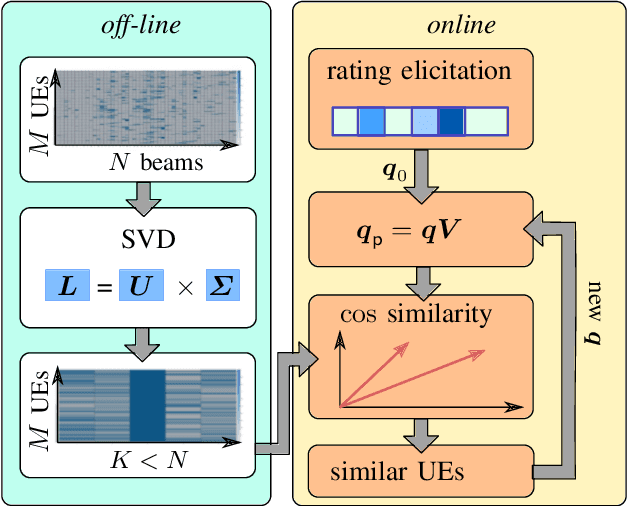

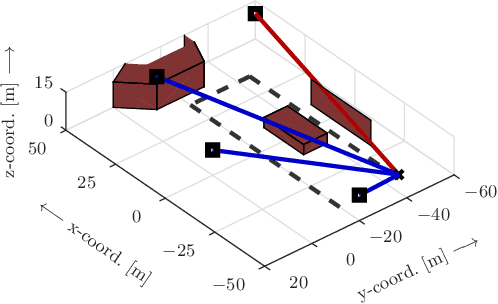

Abstract:Beamforming-capable antenna arrays overcome the high free-space path loss at higher carrier frequencies. However, the beams must be properly aligned to ensure that the highest power is radiated towards (and received by) the user equipment (UE). While there are methods that improve upon an exhaustive search for optimal beams by some form of hierarchical search, they can be prone to return only locally optimal solutions with small beam gains. Other approaches address this problem by exploiting contextual information, e.g., the position of the UE or information from neighboring base stations (BS), but the burden of computing and communicating this additional information can be high. Methods based on machine learning so far suffer from the accompanying training, performance monitoring and deployment complexity that hinders their application at scale. This paper proposes a novel method for solving the initial beam-discovery problem. It is scalable, and easy to tune and to implement. Our algorithm is based on a recommender system that associates groups (i.e., UEs) and preferences (i.e., beams from a codebook) based on a training data set. Whenever a new UE needs to be served our algorithm returns the best beams in this user cluster. Our simulation results demonstrate the efficiency and robustness of our approach, not only in single BS setups but also in setups that require a coordination among several BSs. Our method consistently outperforms standard baseline algorithms in the given task.
Towards Realistic Statistical Channel Models For Positioning: Evaluating the Impact of Early Clusters
Jul 16, 2022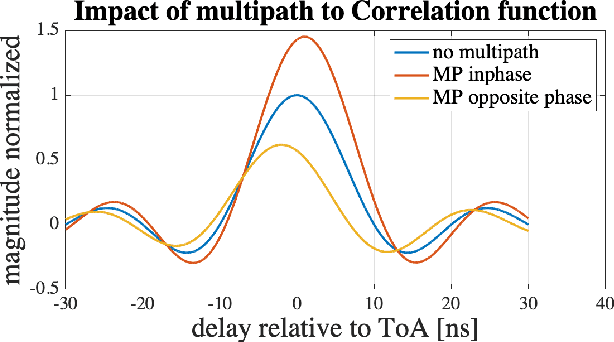
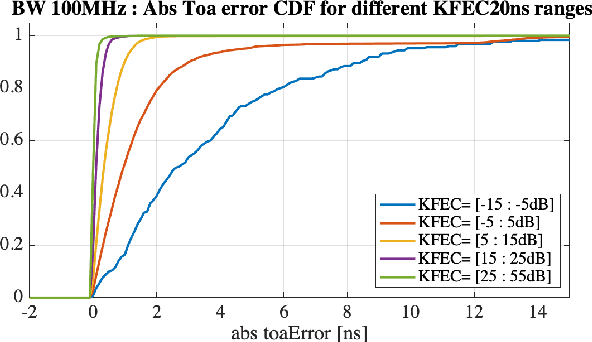
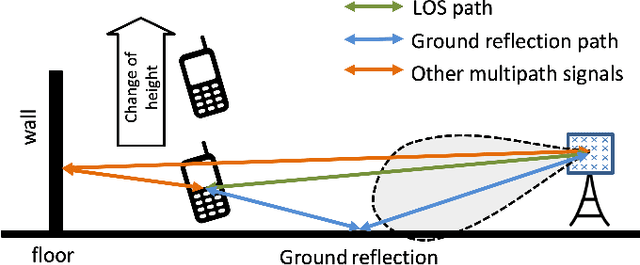
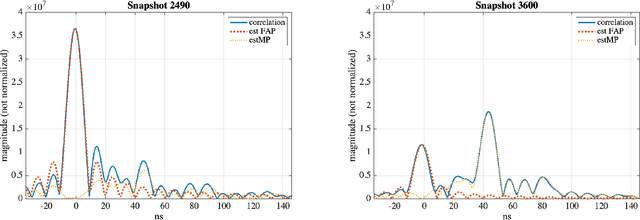
Abstract:Physical effects such as reflection, refraction, and diffraction cause a radio signal to arrive from a transmitter to a receiver in multiple replicas that have different amplitude and rotation. Bandwidth-limited signals, such as positioning reference signals, have a limited time resolution. In reality, the signal is often reflected in the close vicinity of a transmitter and receiver, which causes the displacement of the observed peak from the true peak expected according to the line of sight (LOS) geometry between the transmitter and receiver. In this paper, we show that the existing channel model specified for performance evaluation within 3GPP fails to model the above phenomena. As a result, the simulation results deviate significantly from the measured values. Based on our measurement and simulation results, we propose a model for incorporating the signal reflection by obstacles in the vicinity of transmitter or receiver, so that the outcome of the model corresponds to the measurement made in such scenario.
Complementary Semi-Deterministic Clusters for Realistic Statistical Channel Models for Positioning
Jul 16, 2022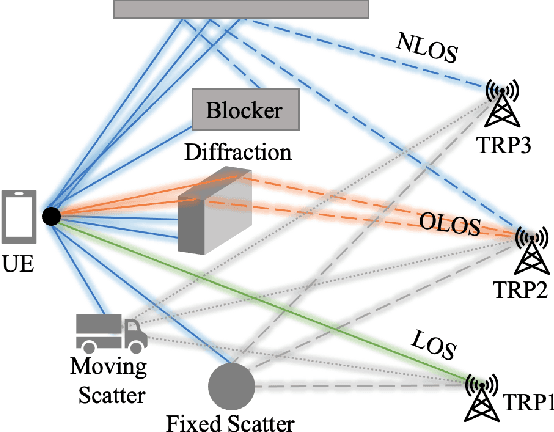

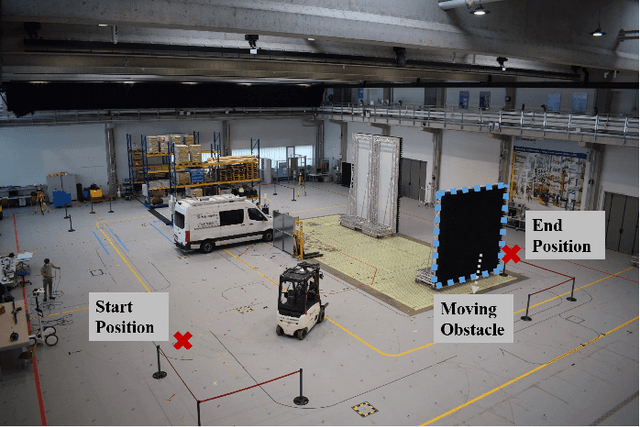
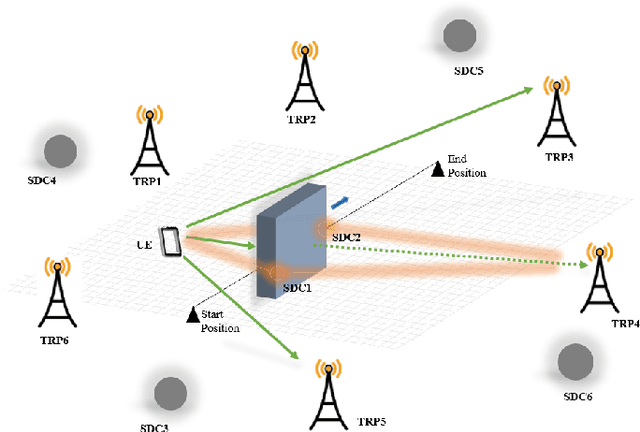
Abstract:Positioning benefits from channel models that capture geometric effects and, in particular, from the signal properties of the first arriving path and the spatial consistency of the propagation condition of multiple links. The models that capture the physical effects observed in a realistic deployment scenario are essential for assessing the potential benefits of enhancements in positioning methods. Channel models based on ray-tracing simulations and statistical channel models, which are current state-of-the-art methods employed to evaluate performance of positioning in 3GPP systems, do not fully capture important aspects applicable to positioning. Hence, we propose an extension of existing statistical channel models with semi-deterministic clusters (SDCs). SDCs allow channels to be simulated using three types of clusters: fixed-, specular-, and random-clusters. Our results show that the proposed model aligns with measurements obtained in a real deployment scenario. Thus, our channel models can be used to develop advanced positioning solutions based on machine learning, which enable positioning with centimeter level accuracy in NLOS and multipath scenarios.
 Add to Chrome
Add to Chrome Add to Firefox
Add to Firefox Add to Edge
Add to Edge